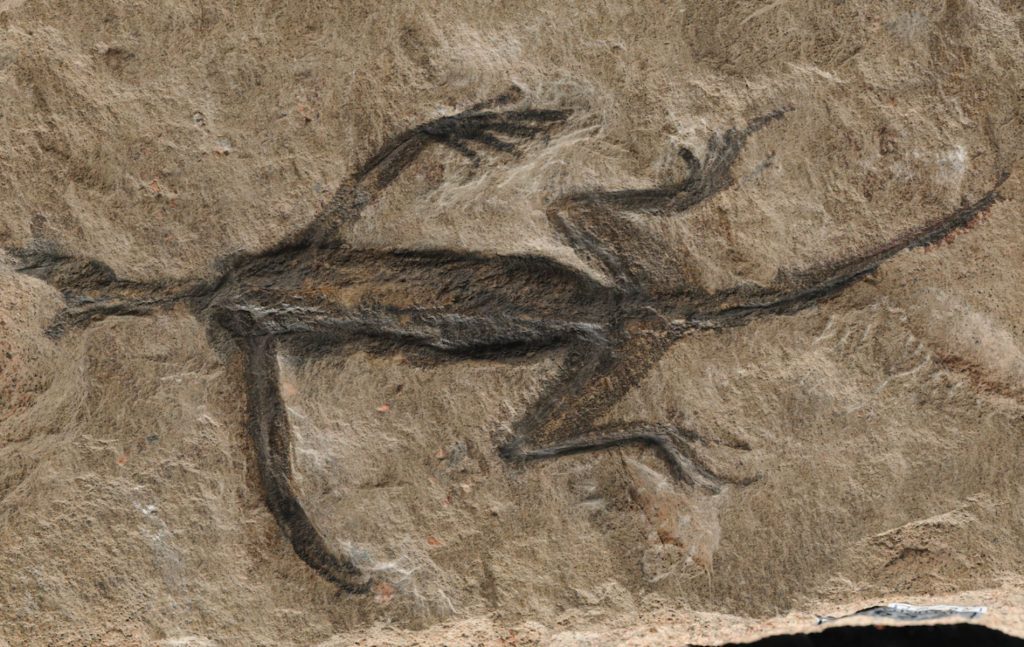A fossil from the Alps has apparently fooled scientists for more than 90 years. The fossil is largely a fake.
Who could have seen that coming? A highly acclaimed fossil called Tridentinosaurus anticus It turns out to consist largely of a pile of black paint on a lizard-shaped stone. The fossil was discovered in 1931 in the Italian Alps. Since then, scientists have been thinking for a long time, because many found it difficult to classify the fossil correctly. Researchers have long believed that the black color came from soft skin tissue that had charred over time and turned into a fossil. For now, this is just speculation, because the fossil has never been examined in a laboratory before. Scientist Valentina Rossi contributed to the research. “The answers to all our questions about this fossil were there for the taking,” she says. By studying this fossil in detail, we were finally able to reveal the secret. The research has been published in the journal Paleontology.
Old paint
To conduct the study, scientists examined the skin in the laboratory. Previous tests using ultraviolet light had already shown the presence of a layer above the fossil. The researchers did not find this to be suspicious, as this was a common way to better preserve fossils. The aim of this research was to collect soft tissue from the fossil itself through painting. “Soft tissue fossils are not common,” Rossi explains. However, they are very important to science, because they can reveal important biological information. Consider, for example, the color of the external skin, and the internal anatomy and physiology of the animal. During the analysis, the researchers encountered a strange development: the texture and composition of the material did not correspond to real soft tissue from fossils, but to the coating. “The special method of preservation Tridentinosaurus It has kept experts busy for decades. After this research, we were finally able to understand the mystery: what was first described as charred skin turned out to be just paint.
artistic work
This discovery is particularly significant because the fossil has long been praised in the literature. For example, it is often cited in books and studies as an important example that can help us understand the early development of reptiles. Now it turns out that much of this is not true. Researchers have now warned the scientific world to be careful when citing the fossil.
According to the research, it is not yet known who decided more than 90 years ago to draw an old lizard in order to later mislead scientists en masse. However, we can say that this person did not want to completely defraud everything. The fossil isn't exactly fake: the hip bones in particular are real. Not only that; Small bony scales were also discovered on what was likely the back of the animal. Perhaps the artist's intent was not explicitly malicious; Maybe this person just wanted to offer us a helping hand in seeing a little more than just a bunch of old hip bones.

“Coffee buff. Twitter fanatic. Tv practitioner. Social media advocate. Pop culture ninja.”











More Stories
Which can cause an increase in nitrogen.
The Central State Real Estate Agency has no additional space to accommodate Ukrainians.
The oystercatcher, the “unlucky national bird,” is increasingly breeding on rooftops.